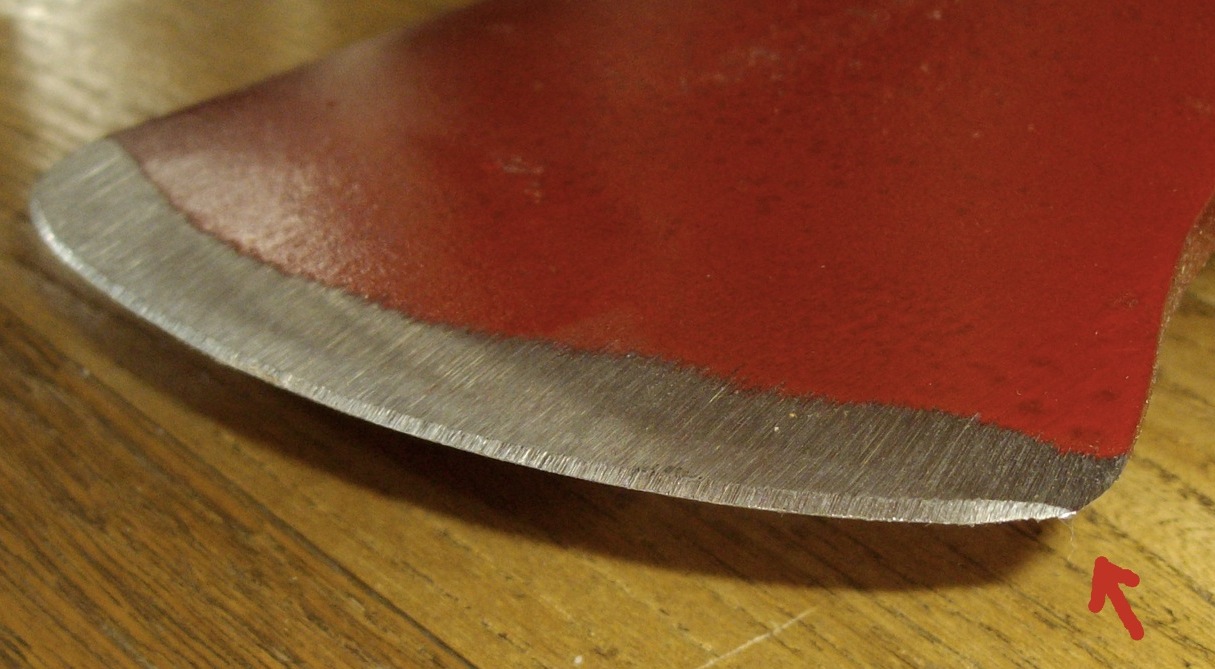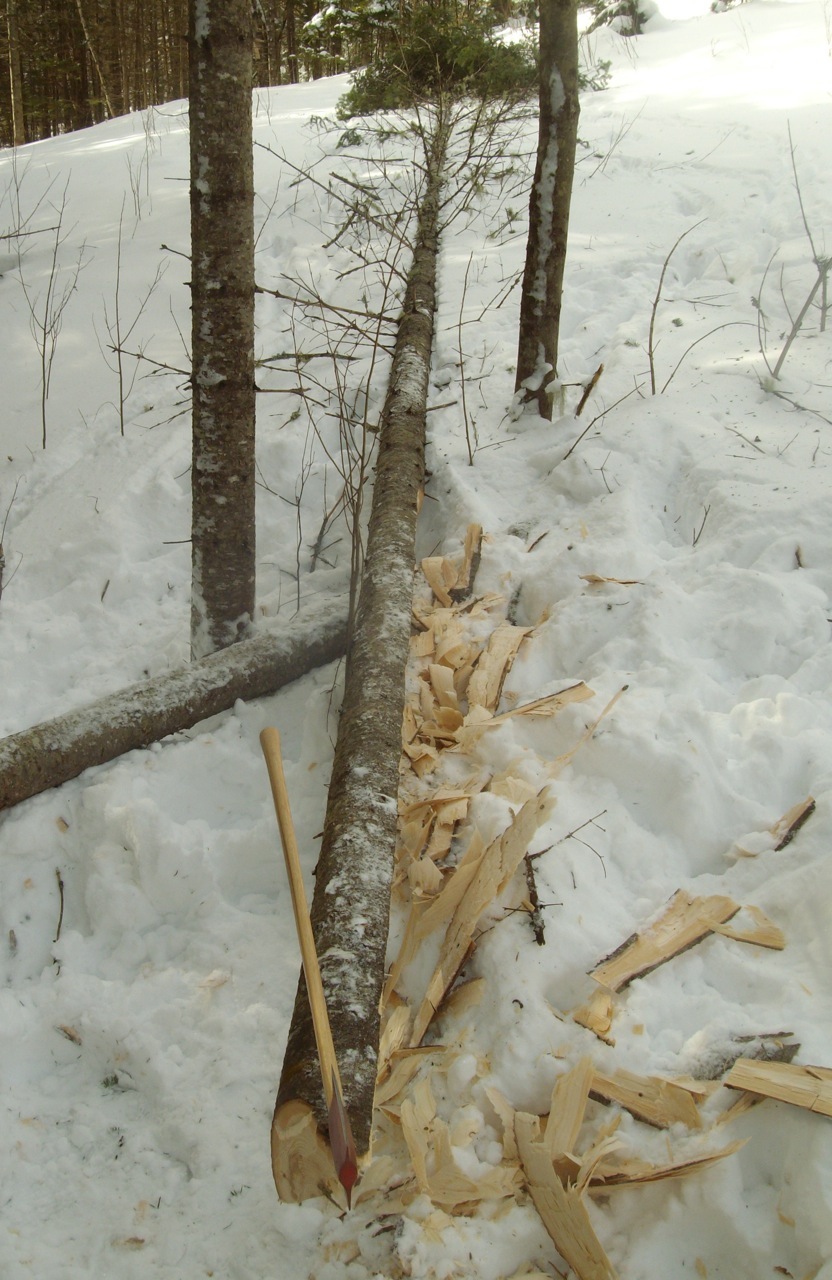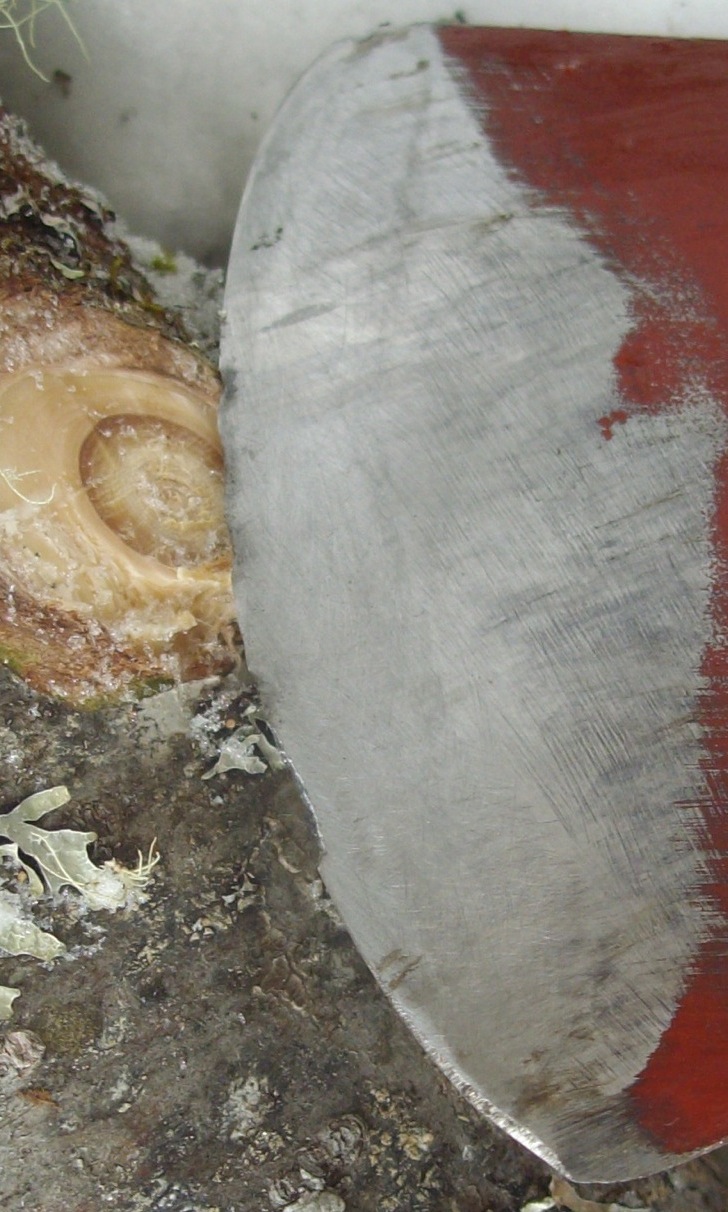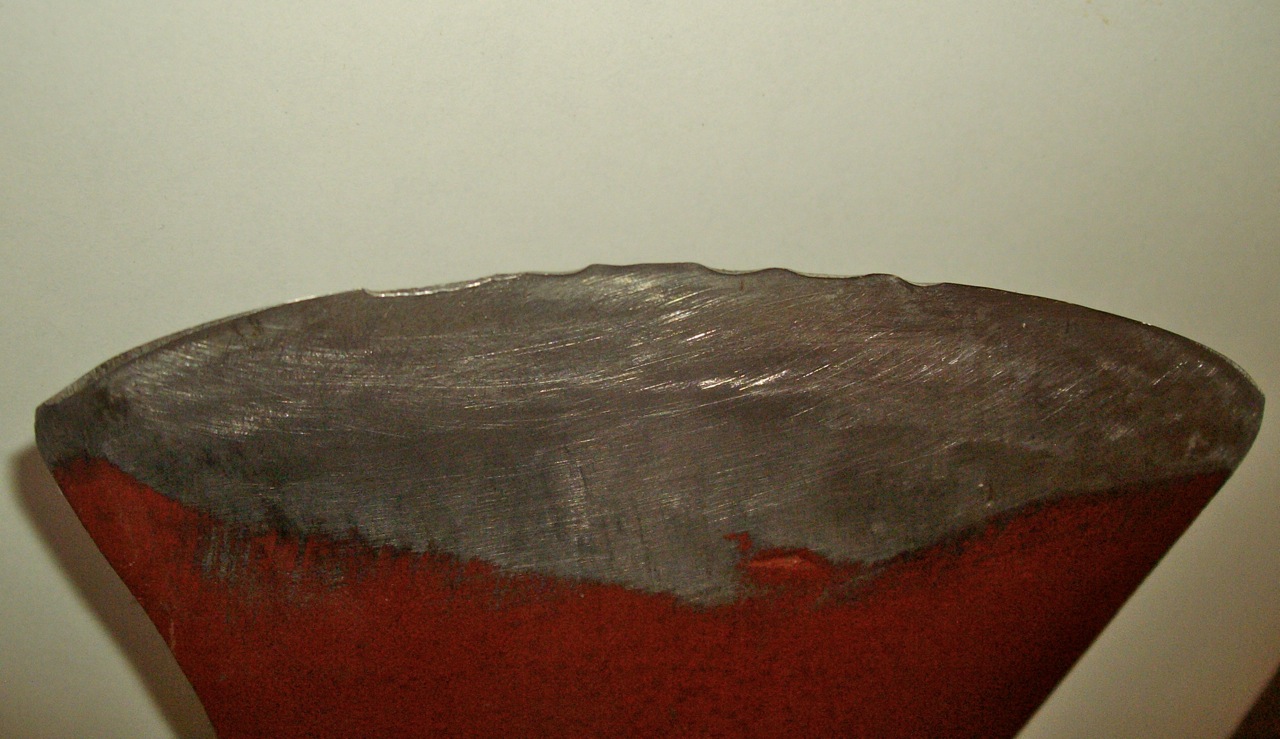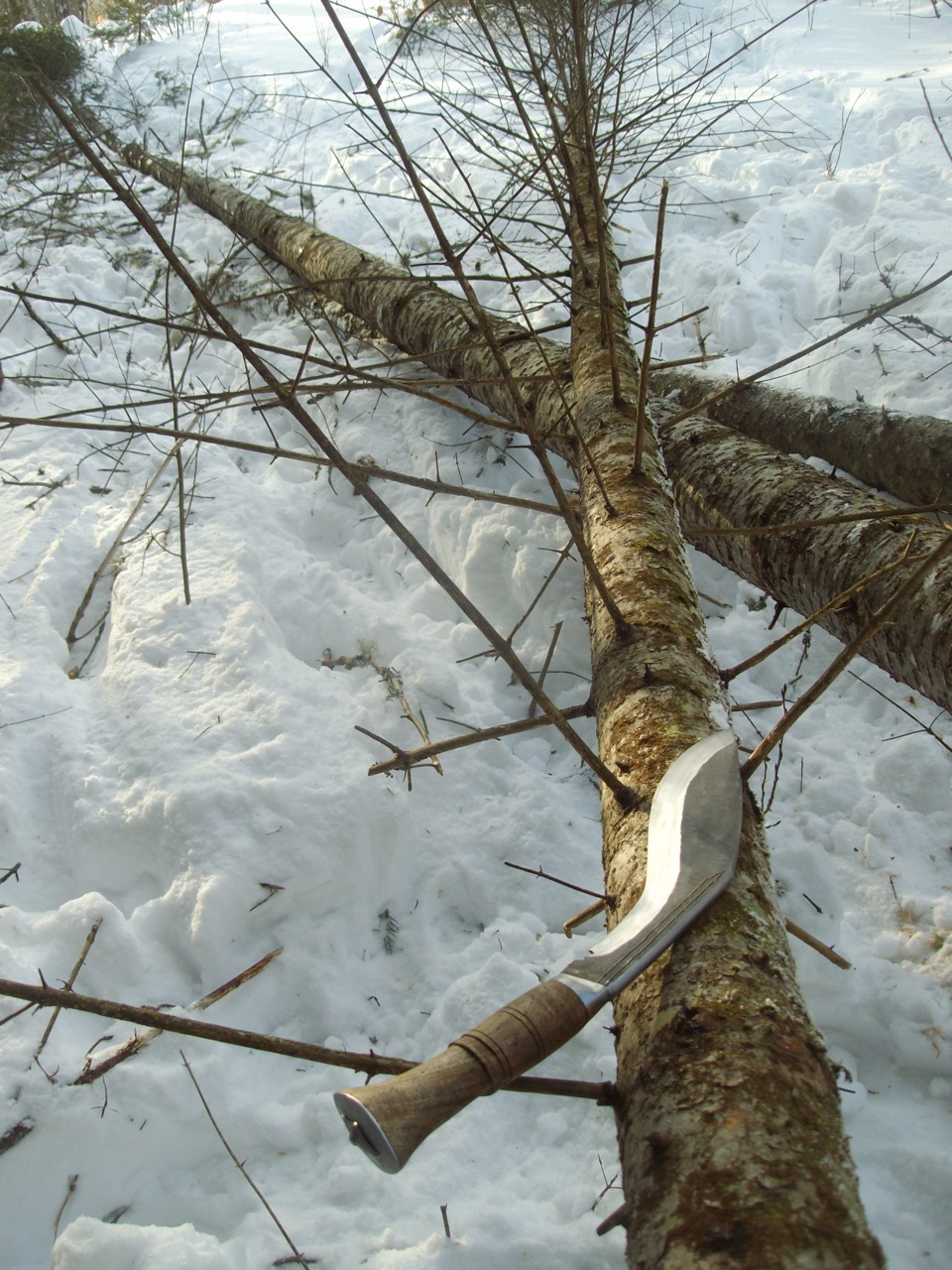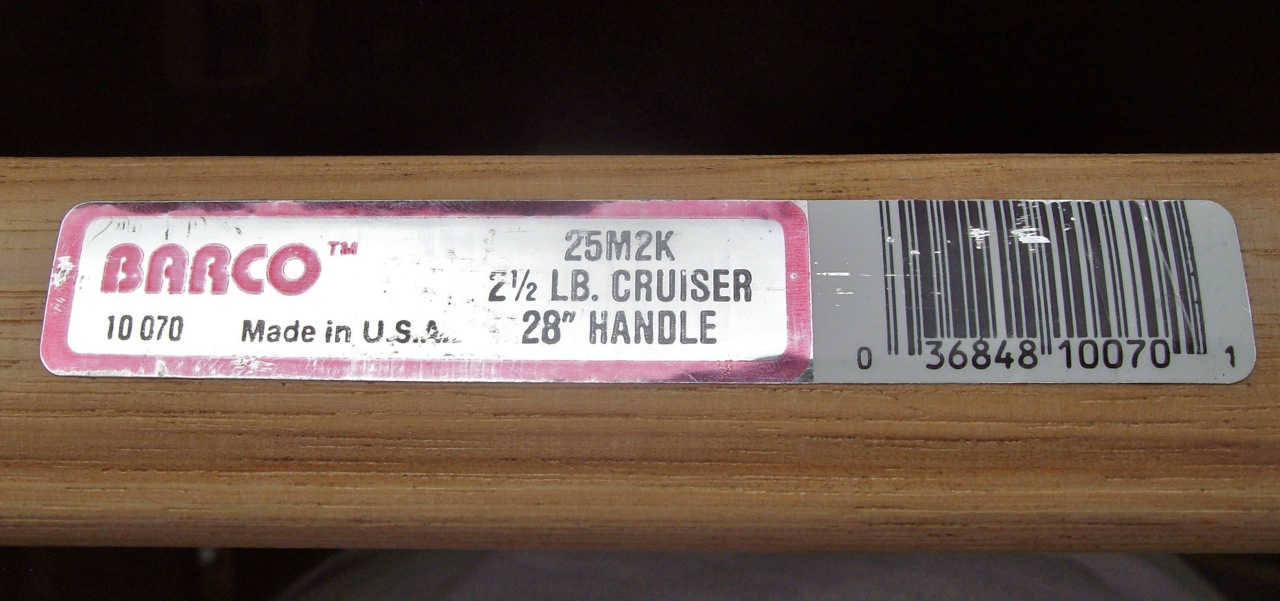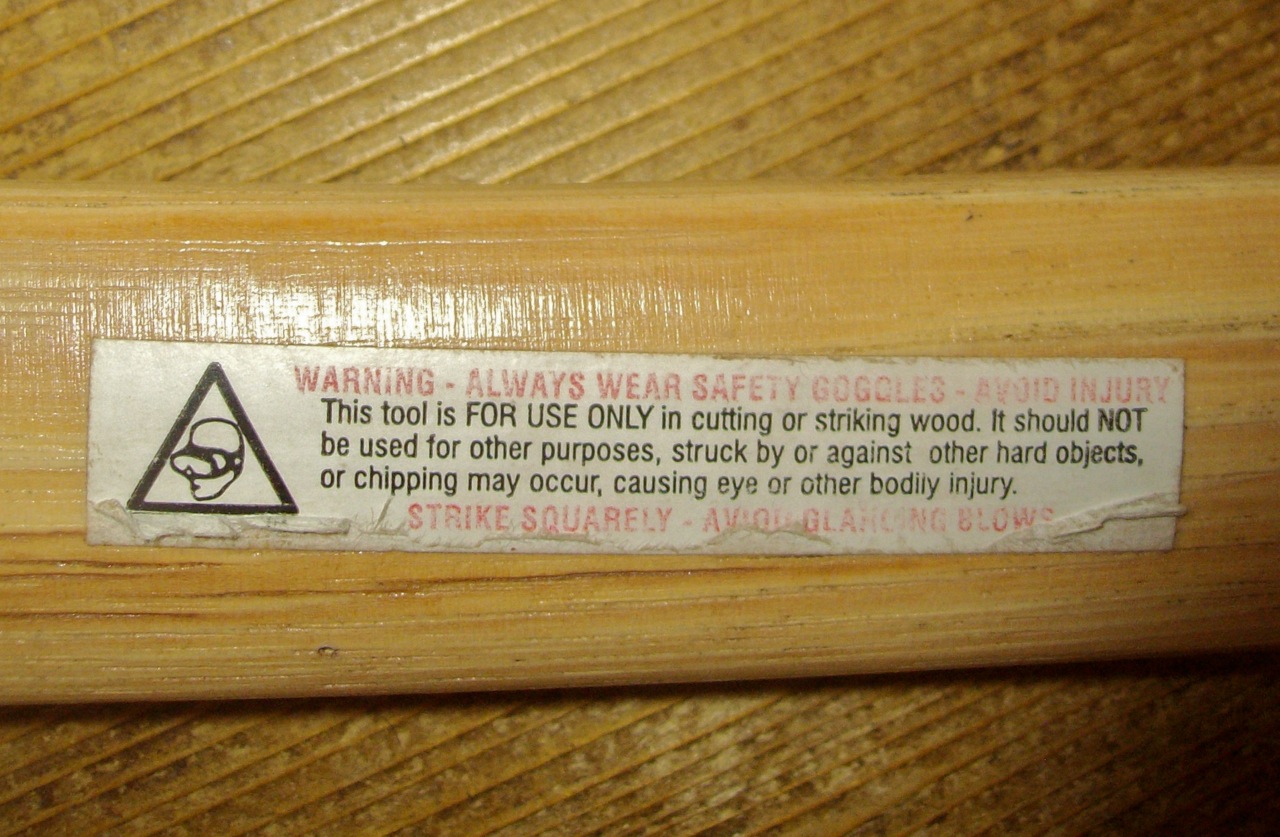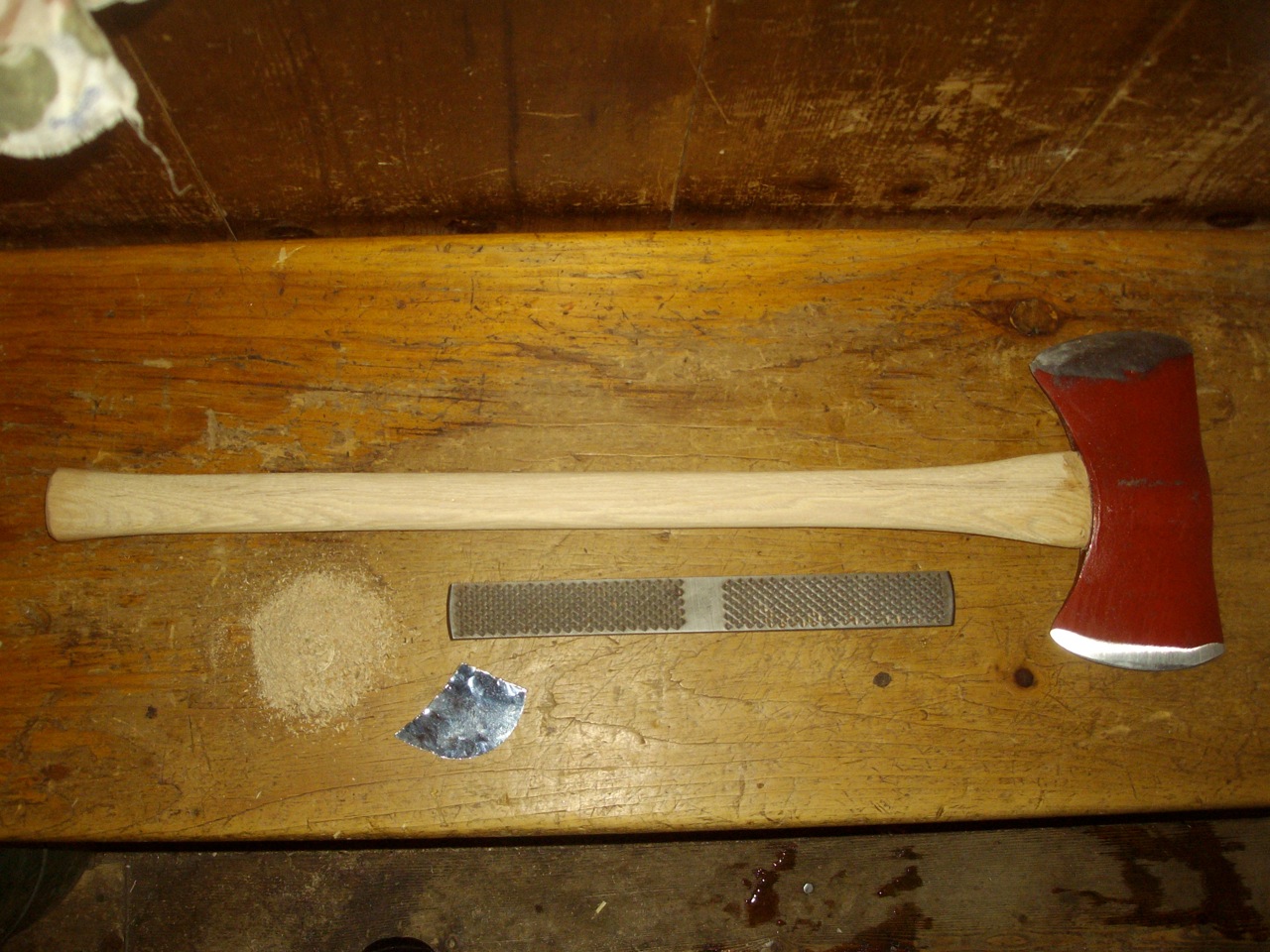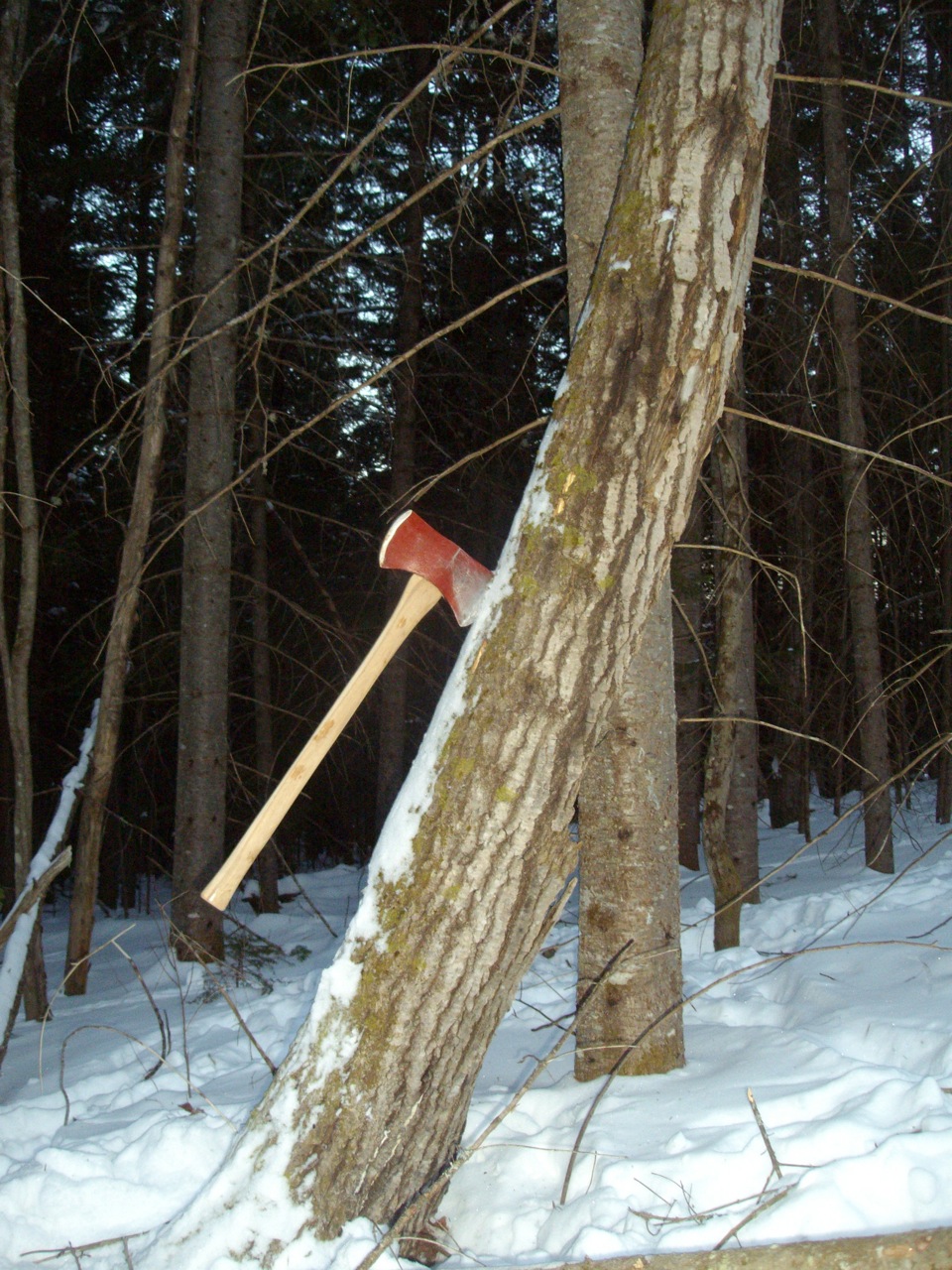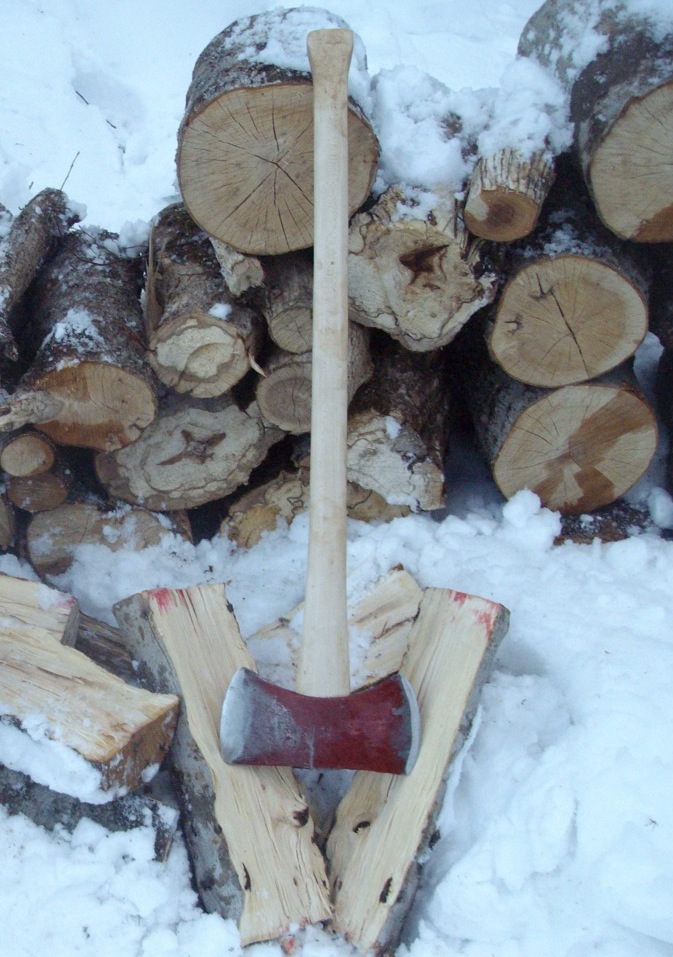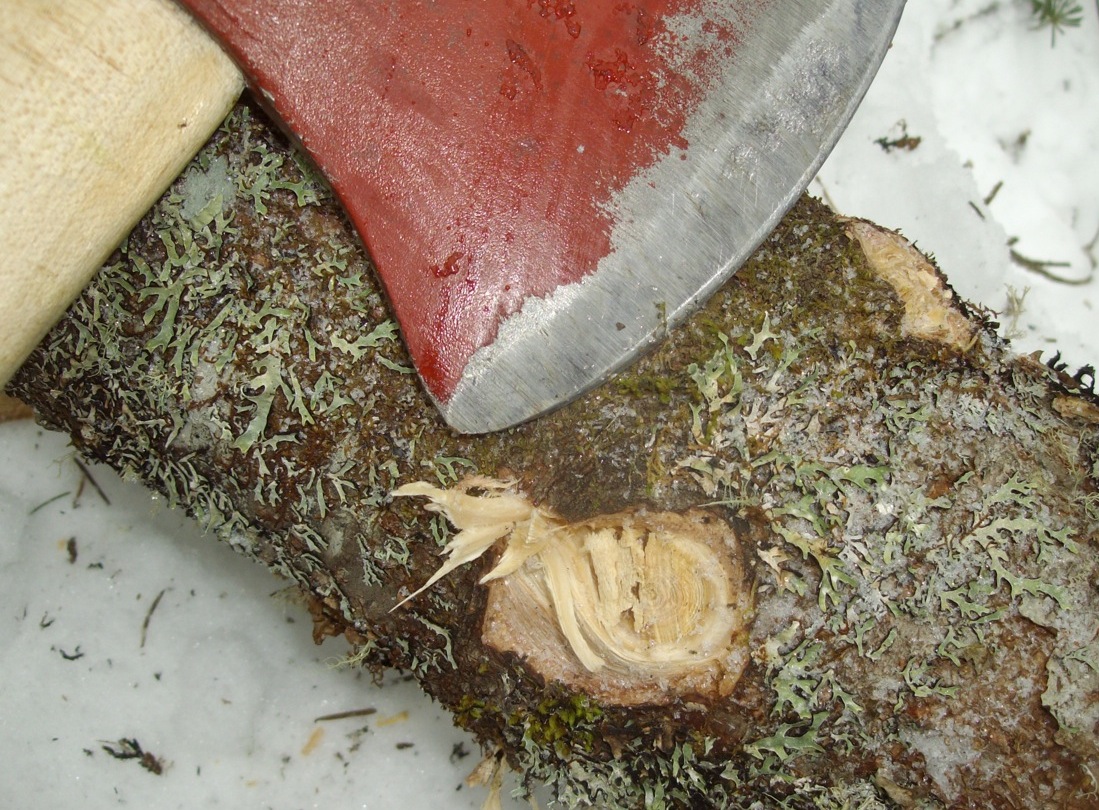- Joined
- Sep 26, 2005
- Messages
- 3,516
I have wanted a cruiser axe for a long time, ever since I saw Dick Proenneke use one to build a log cabin in Alaska on a PBS show. Actually like a lot of people those images inspired my love of the outdoors, pretty much. Not a lot of cruisers are being made anywhere, but I found one company called Barco, and they make a cruiser called the kelly woodslasher. (what a cool name!) I tried getting them to mail me one to Canada after reading Woodtrekker's review on his blog, but they never even responded to my e-mail. It was a long journey, but finally, thanks to the help of fellow forumite Steve Tall, he got me in touch with the Vido family, who were able to get one ordered and mailed to their PO box in Maine, then it was mailed off to me.
I really had to do nothing but mail a money order and send a few e-mails, they were really great. (Despite me being pretty close minded and critical about Miss Vido chopping wood barefoot in a thread a while back, which she was able to forgive and I am glad to consider her a friend now. )
)
We ordered the barco double pack, and we would each get one. Miss Vido was kind enough to send me the nicer of the two, but they were supposedly similar in fit and finish, more or less.
OK on to the review. I picked it up at the PO on the way to work and the paint lasted only a few hours, as the whole thing fit into the sand blaster cabinet.
Weighed on a kitchen scale (after material removed) she comes in at 3 pounds, 6.6 ounces. (A bit more than the advertised 2.5, must be just the head weight) and just a bit under 28 inches OAL.
I also decided I wanted an octagonal handle so I clamped it down and sanded away with a power sander, then put a nice sharp edge on one side and a slightly blunter one on the other, all with a file. The steel was not overly hard and this was not too hard a task, it was not as blunt as I thought it would be, either. I was quite pleased with the handiness and weight of the axe, it was like a boys axe but just felt great to hold. It felt even better with an octagon handle, I think I am hooked, and it really didn't take that long, either.
I was informed that the vido's axe had not performed too well, but was not given any further details as it may detract from my review, such as cause me to not push it too it's limits. I was disappointed to hear this, both in thinking mine may be a dud, and that they had not been happy with their axe which I had pretty much made them buy. But I was determined to put this little axe through it's paces and see if it fell short in any way.

I started with a standing dead birch tree not far off the trail. It was slightly punky higher up but very solid up to about 6 feet. I am not a lumberjack, and had never actually swung a double bit axe, but I could feel how well balanced it was right away. Accurate cuts were very easy, and also being my first axe with a decent high centerline, I was pretty surprised to see the size of the chips being popped out. My dog is not the brightest but she keeps away while I am chopping, and I keep an eye on her too, but she was seeing the big chips flying and as soon as I stopped to look at some chips she came bounding in to grab a few choice ones. She is a fan of this axe too, then.

The stump.

So I was impressed at how fast this tree went down, but I was thinking too myself "Sure Liam, that' was some hard wood, but you are no expert here. That could have been a bit rotten." So I headed deeper off the path and picked a similar sized maple. It was alive but we have trees to spare up here in Canada. Plus I picked the ugliest one I could find and went to town. I had pretty similar results, and actually decided to see if I could chop left handed. I never tried this before and so I went slow at first. The combination of the balance and the octagon handle offering intuitive edge awareness (is that a thing?)
I was able to get some pretty decent chops on the opposite side. Checking the edge pretty frequently I saw no damage, only a slight dulling. I did notice that the blunter edge really did not perform as well at all, which is rather obvious I guess. I am wondering if I should match both sides so I can have too super edges, or keep one blunt just in case. maybe I will just refine the blunter edge a bit. I was feeling pretty pumped about the axe and decided it was time to head home. (but not before a quick shot of what was tagging along)

So, on the way home I was thinking I was pleased with my new axe, but what had gone wrong with the Vido's axe? The only thing I could think of was the head slipped loose, as mine moved up a fraction of an inch during some chopping, but really it was half a hair right at the start, and keeping a close eye on it, it did not budge again. But I still couldn't get it out of my head that maybe I had not given it enough of a challenge. At the same time I was thinking about fatwood, I had never found any in my casual searches for it, and I had to buy some from walmart. I decided to look for some along the trail on the way back, and booted a stump, no dice. I spotted another stump and on my way to it I literally tripped over what looked like a rotten gnarled thing in the ground. I gave it a kick and it was as hard as a rock, then dug my mora in and dug a chip out, gave a whiff and it smelled like turpentine . I decided then and there to kill two birds with one stone and test this axe and get me some good Nova Scotia fatwood. I was not sure if it was crazy to use an axe for this but I was determined, and since it was covered in dirt I used my blunter edge.
. I decided then and there to kill two birds with one stone and test this axe and get me some good Nova Scotia fatwood. I was not sure if it was crazy to use an axe for this but I was determined, and since it was covered in dirt I used my blunter edge.
With duct tape sheath.

The good stuff.

This was some hard stuff and it went very well, I can see no edge damage, and now I have some fatwood.:thumbup:
So, from my perspective, I can recommend this axe. Miss Vido will be along shortly to share her experience, too, so don't run out and buy all they have in stock, I am very curious to hear it myself. But the bottom line is I am happy with mine and I was not disappointed in the cruisers that I have wanted for such a long time. Now I just need to make a nice sheath for it.
I really had to do nothing but mail a money order and send a few e-mails, they were really great. (Despite me being pretty close minded and critical about Miss Vido chopping wood barefoot in a thread a while back, which she was able to forgive and I am glad to consider her a friend now.
We ordered the barco double pack, and we would each get one. Miss Vido was kind enough to send me the nicer of the two, but they were supposedly similar in fit and finish, more or less.
OK on to the review. I picked it up at the PO on the way to work and the paint lasted only a few hours, as the whole thing fit into the sand blaster cabinet.
Weighed on a kitchen scale (after material removed) she comes in at 3 pounds, 6.6 ounces. (A bit more than the advertised 2.5, must be just the head weight) and just a bit under 28 inches OAL.
I also decided I wanted an octagonal handle so I clamped it down and sanded away with a power sander, then put a nice sharp edge on one side and a slightly blunter one on the other, all with a file. The steel was not overly hard and this was not too hard a task, it was not as blunt as I thought it would be, either. I was quite pleased with the handiness and weight of the axe, it was like a boys axe but just felt great to hold. It felt even better with an octagon handle, I think I am hooked, and it really didn't take that long, either.
I was informed that the vido's axe had not performed too well, but was not given any further details as it may detract from my review, such as cause me to not push it too it's limits. I was disappointed to hear this, both in thinking mine may be a dud, and that they had not been happy with their axe which I had pretty much made them buy. But I was determined to put this little axe through it's paces and see if it fell short in any way.

I started with a standing dead birch tree not far off the trail. It was slightly punky higher up but very solid up to about 6 feet. I am not a lumberjack, and had never actually swung a double bit axe, but I could feel how well balanced it was right away. Accurate cuts were very easy, and also being my first axe with a decent high centerline, I was pretty surprised to see the size of the chips being popped out. My dog is not the brightest but she keeps away while I am chopping, and I keep an eye on her too, but she was seeing the big chips flying and as soon as I stopped to look at some chips she came bounding in to grab a few choice ones. She is a fan of this axe too, then.

The stump.

So I was impressed at how fast this tree went down, but I was thinking too myself "Sure Liam, that' was some hard wood, but you are no expert here. That could have been a bit rotten." So I headed deeper off the path and picked a similar sized maple. It was alive but we have trees to spare up here in Canada. Plus I picked the ugliest one I could find and went to town. I had pretty similar results, and actually decided to see if I could chop left handed. I never tried this before and so I went slow at first. The combination of the balance and the octagon handle offering intuitive edge awareness (is that a thing?)
I was able to get some pretty decent chops on the opposite side. Checking the edge pretty frequently I saw no damage, only a slight dulling. I did notice that the blunter edge really did not perform as well at all, which is rather obvious I guess. I am wondering if I should match both sides so I can have too super edges, or keep one blunt just in case. maybe I will just refine the blunter edge a bit. I was feeling pretty pumped about the axe and decided it was time to head home. (but not before a quick shot of what was tagging along)

So, on the way home I was thinking I was pleased with my new axe, but what had gone wrong with the Vido's axe? The only thing I could think of was the head slipped loose, as mine moved up a fraction of an inch during some chopping, but really it was half a hair right at the start, and keeping a close eye on it, it did not budge again. But I still couldn't get it out of my head that maybe I had not given it enough of a challenge. At the same time I was thinking about fatwood, I had never found any in my casual searches for it, and I had to buy some from walmart. I decided to look for some along the trail on the way back, and booted a stump, no dice. I spotted another stump and on my way to it I literally tripped over what looked like a rotten gnarled thing in the ground. I gave it a kick and it was as hard as a rock, then dug my mora in and dug a chip out, gave a whiff and it smelled like turpentine
With duct tape sheath.

The good stuff.

This was some hard stuff and it went very well, I can see no edge damage, and now I have some fatwood.:thumbup:
So, from my perspective, I can recommend this axe. Miss Vido will be along shortly to share her experience, too, so don't run out and buy all they have in stock, I am very curious to hear it myself. But the bottom line is I am happy with mine and I was not disappointed in the cruisers that I have wanted for such a long time. Now I just need to make a nice sheath for it.
Last edited:



